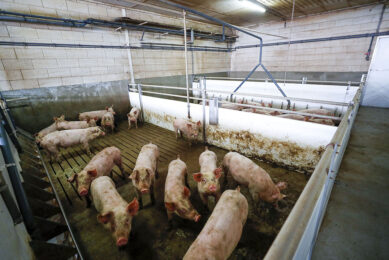Feeling the heat

What is your first response when you are feeling too warm? Do you reach for a cold drink, seek out shade or put the fan on its highest setting? We humans may groan when temperatures rise, but our bodies have a way of dealing with this. But what about livestock? How do they deal with heat stress and more importantly what can be done to mitigate it?
Heat stress occurs when an animal’s heat load is greater than its capacity to lose heat. In livestock this can have a detrimental impact on fertility/reproductive performance, it can compromise the immune system and cause havoc with intestinal integrity, all in all it does not bode well for the animal or the farm. Each species is affected differently as animals are not equal in their ability to resist or recover from heat stress.
There are several approaches that can be taken to alleviate the negative impact of heat stress on animals; from environmental management such as providing shade, use of fans to using feeding strategies such as a nutritional aid like natural betaine or pomegranate peel.
This special issue explores all these avenues and more such as the legislation surrounding the transport of animals during extreme temperatures, the use of technology to assist in determining when heat stress could be a risk, plus tips and tricks for proper ventilation and feeding.
Whichever approach you choose to implement, it is important to take the needs of the farm, the producer and most of all the animals into consideration.
 Beheer
Beheer





 WP Admin
WP Admin  Bewerk bericht
Bewerk bericht